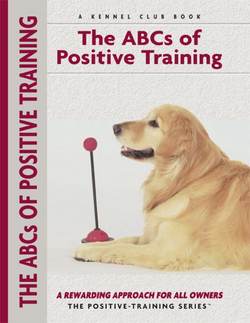Читать книгу Abc's Of Positive Training - Miriam Fields-Babineau - Страница 8
ОглавлениеLearn how to teach your dog the positive way so that he performs for you anywhere and in any situation.
Positive dog training is based upon the studies of noted psychologist Edward Thorndike around the turn of the 20th century. He studied the ability to problem-solve in cats and dogs and was especially interested in the comparison of learned behavior occurring through imitation or observation as well as how quickly a mechanical response was repeated once successful. Do animals learn better through trying over and over and by chance getting the desired response? Or can they learn through watching other animals perform? His results formed a “law” of psychology—the law of effect—essentially stating that the closer the reward to the stimulus, the faster the behavior to obtain that reward will occur, whereas behaviors associated with discomfort will become less pronounced.
A well-trained and well-behaved dog is a wonderful companion who brings so much joy to his owners.
In 1914, John Broadhus Watson extrapolated that Thorndike’s law of effect was incorrect and that animals simply respond through instinct and reflex to stimuli, not using any reasoning or problem-solving behaviors. His experiments involved rats in mazes and conditioning them to learn various routes to their food rewards. Watson stated that the reinforcers or rewards might cause a specific behavior to occur more often but didn’t act directly on the learning curve. In essence, he rejected the notion of retained memory until a stimulus strengthened the association through repetition.
By the 1920s, Watson’s theories were disproved by Edward Tolman, who demonstrated that rats could recognize (through memory) and learn regardless of unexpected changes in the environment, but that decreasing the quality of the reward would weaken the learning. In 1942, this effect was further studied by another behavioral scientist, Crespi, who showed that a decreased reward caused a slower response, while an increased reward elevated the response.
All of this behavioral research was put into perspective when Burrhus Frederic Skinner published The Behavior of Organisms in 1938. He connected all of the previous works by stating that the animals were imprinted into responses through sequential learning. The law of effect was resurrected through Skinner’s development of the Skinner Box, which enabled psychologists to study the sequence of learned behavior produced over a period of time. Skinner thus developed the basic concept of operant conditioning—operant response (learned response) and reinforcer (reward). The stimulus was the signal that associated the act with the reward.
In order to fully understand operant conditioning, you’ll need to understand how the Skinner Box worked. The box is fully enclosed, with a lever or lighted button on one end, a hopper containing food and nothing else other than a grated floor to stand upon. The subject is an animal such as a rodent, pigeon or primate. The animal is placed in the box and allowed to do as it wishes while inside. A trainer peers into the box via a window and has a finger upon a trigger that releases a food reward.
When food is released, most of the subjects go directly to the hopper and eat the food. If not, the subject will clean itself or walk around, eventually getting to the food and eating it. It quickly learns the food-source location and will remain nearby to obtain more. As it does so, the trainer triggers the release of more food. Each successive reward is given as the subject gets closer to the hopper. Then the subject is required to present a specific behavior to obtain the food reward, such as touching the lever or lighted button. The trainer aims the food release at each successive behavior response that gets the subject nearer to the target (lever/button). As the subject becomes conditioned to touching the target to receive his reward, he will increase his targeting responses accordingly, going directly to the target, touching/pressing and receiving the reward. This process is called shaping. The trainer is shaping the behavior through reinforcing each increment of the overall desired response.
Focused intently on the trainer, these dogs have been conditioned to sit for rewards.
Targeting is the first step in positive dog training.
In summary, Skinner stated that positively reinforced behavior will recur and that information should be presented in small amounts to shape the responses. He also noted that reinforcement will generalize with similar stimuli and produce secondary conditioning, which means that the learning curve will improve with each successively learned behavior.
Now that you’re acquainted with the basic principles of operant conditioning, let’s explore how it translates into training our canine companions.
